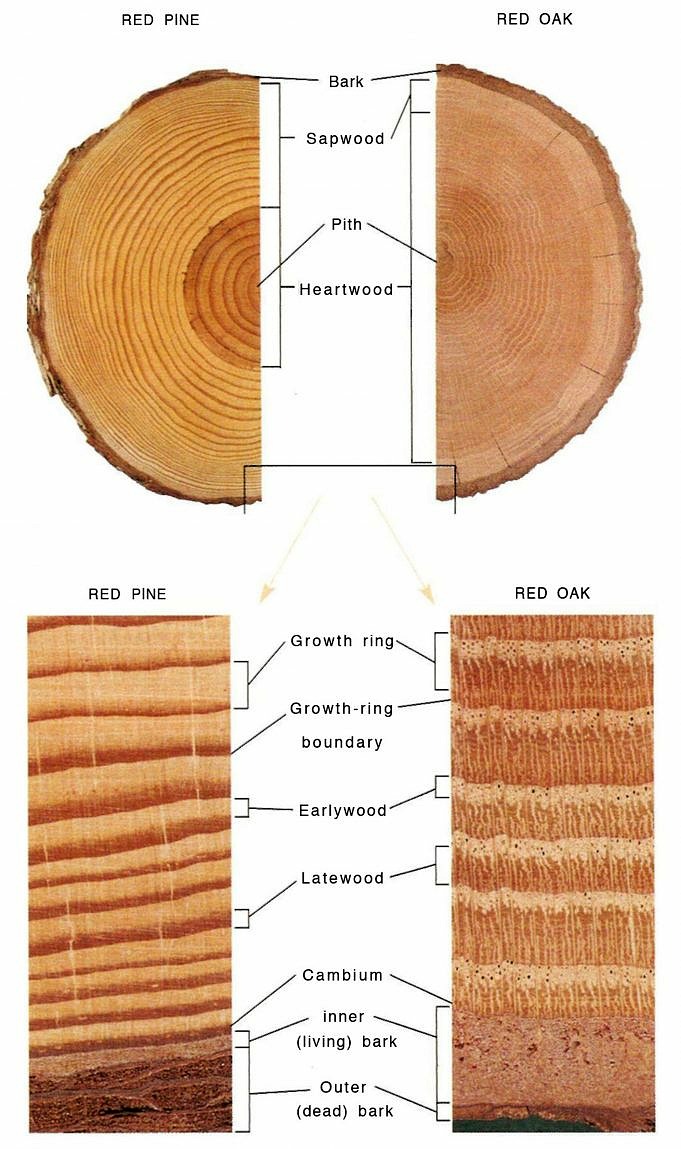Is Pine A Hardwood, Or A Softwood? Everything You Need To Know
Share It
Pine is a popular, affordable, and dependable choice for woodworkers. But what type of pine is it? It is difficult to understand hardwood and softwood and it can have a negative impact on your project’s construction.
So, to help you make an informed decision, this article will thoroughly discuss if pine is a hardwood or a softwood and more.
Hardwood And Softwood Comparison: Key Considerations
It’s not prudent to assume that hardwood and softwood can be distinguished solely by their texture.
Hardwoods can be hardier than softwoods, but not all softwoods. For example, Yew is a softwood that is known for its hard exterior while hardwood balsa has the opposite. Here are some ways to distinguish the two.
- Angiosperm trees are the source of hardwoods. These have broad leaves that seasonally change colors and are usually flowering trees.
- Softwoods come from gymnosperm trees. These trees are not fruit bearing and are often evergreen conifers.
- Under a microscope, hardwoods show vessels and appear as pores. Meanwhile, softwoods under a microscope show tracheids and present no pores.
- Because they grow quickly, softwoods are more affordable than hardwoods. Hardwoods can be harder to harvest and are therefore more expensive.
- Hardwoods are a popular choice for high-end items and are durable.
- Softwoods can be used to make timber and many softwoods can also be used for paper and engineered wood materials such as MDF.
- Hardwoods include oak and balsa as well as maple, walnut, mahogany and teak.
- Softwoods include cedar, cedar, juniper and yew.
After reading the key comparisons above, you might have the answer on whether pine is a hardwood or a softwood.
Simply put, pine is a softwood because it produces needles and cones, it is an evergreen, it does not have leaves, and its wood component has tracheids and no visible pores under a microscope.
Wood Hardness Explained
The Janka scale is a simple test to determine the wood hardness. It is done by pushing a hydraulic press and a half-inch steel ball against the tested wood. The force reinforced in this test is the woods hardness measurement.
Balsa, a hardwood, ranks at the bottom with a Janka score of 45 kg. The lignum vires, a tropical wood with a Janka score 2,041 kg is at the top, making it non-buoyant.
I pini di solito hanno un punteggio Janka compreso tra 300 e 454 kg. Il punteggio più comune del pino bianco orientale è di 172 kg, mentre il pino zuccherino è di 172 kg e il pe bianco occidentale di 191 kg. Il Jackpine pesa 259 kg e il pino Ponderosa è a 1 kg.
Perché Il Pino Rimane Ancora La Scelta Migliore
I falegnami veterani scelgono ancora il pino quando si tratta di modanature interne, battiscopa, assi per terrazze, assi del pavimento e altri mobili. Questo perché il pino è:
Facilmente Disponibile
Il pino ha molte varianti ed è prontamente disponibile nella maggior parte delle regioni. Prospera facilmente nella maggior parte delle altitudini e dei climi ed è più comune nella parte orientale del Nord America. È facile da raccogliere, il che lo rende conveniente.
È Facile Da Usare
Il pino è facile da lavorare. I falegnami esperti possono facilmente tagliare e lavorare con il pino perché non è un legno duro. Il pino è trattato chimicamente per migliorarne la durata in modo che non soccomba alla putrefazione e alla deformazione.
Aspetto Gradevole
Il pino è il legno migliore per i mobili rustici. Il pino è a grana aperta ed è disponibile in una varietà di colori, tra cui bianco avorio e terra di Siena bruciata. Trattato chimicamente, è facile da macchiare.
Guida All’acquisto Di Legname Di Pino
Aspetto Esteriore
Grazie alla loro superficie impeccabile, le tavole di pino di alta qualità sono facili da identificare. Ciò significa che sono privi di nodi e imperfezioni.
L’assenza di nodi e imperfezioni sulla tavola la rende più stabile ed è improbabile che si restringa o si deformi nel tempo. Il pino di prima qualità è di colore uniforme.
Grado Comune
Le assi di pino di grado comune possono presentare imperfezioni o nodi leggeri. Questo è meno costoso e ideale per l’installazione di pannelli di pino nodoso o mobili leggeri.
Costruzione
Le tavole di pino da costruzione sono le più economiche in quanto hanno molti difetti. Possono avere nodi, vene linfatiche e altre imperfezioni e non soddisfano i requisiti di aspetto del pino comune.
Queste tavole sono strutturalmente solide e saranno trattate a pressione quando prodotte per migliorarne la qualità.
Conclusione
Il pino è un legno duro o tenero? Per riassumere, il pino non è un legno duro. Il pino è un legno tenero di conifere e ha coni e aghi piuttosto che frutti e foglie. È anche sempreverde e può essere visto al microscopio per vedere i tracheidi.
Anche se il pino non è un legno duro, rimane un materiale di base nella produzione di mobili a causa della sua accessibilità, convenienza ed estetica generale.



